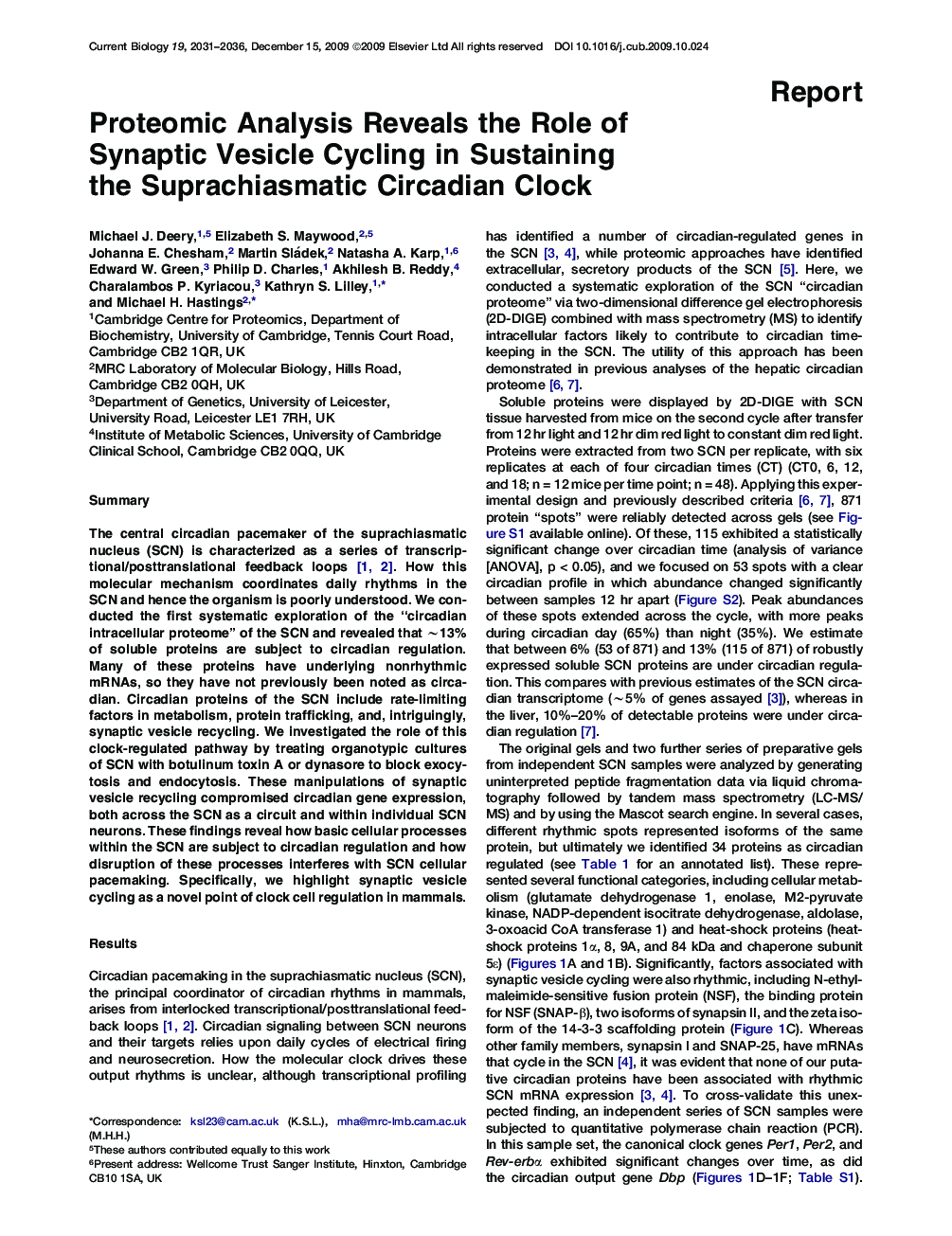| کد مقاله | کد نشریه | سال انتشار | مقاله انگلیسی | نسخه تمام متن |
|---|---|---|---|---|
| 2044143 | 1073403 | 2009 | 6 صفحه PDF | دانلود رایگان |

SummaryThe central circadian pacemaker of the suprachiasmatic nucleus (SCN) is characterized as a series of transcriptional/posttranslational feedback loops 1 and 2. How this molecular mechanism coordinates daily rhythms in the SCN and hence the organism is poorly understood. We conducted the first systematic exploration of the “circadian intracellular proteome” of the SCN and revealed that ∼13% of soluble proteins are subject to circadian regulation. Many of these proteins have underlying nonrhythmic mRNAs, so they have not previously been noted as circadian. Circadian proteins of the SCN include rate-limiting factors in metabolism, protein trafficking, and, intriguingly, synaptic vesicle recycling. We investigated the role of this clock-regulated pathway by treating organotypic cultures of SCN with botulinum toxin A or dynasore to block exocytosis and endocytosis. These manipulations of synaptic vesicle recycling compromised circadian gene expression, both across the SCN as a circuit and within individual SCN neurons. These findings reveal how basic cellular processes within the SCN are subject to circadian regulation and how disruption of these processes interferes with SCN cellular pacemaking. Specifically, we highlight synaptic vesicle cycling as a novel point of clock cell regulation in mammals.
Journal: - Volume 19, Issue 23, 15 December 2009, Pages 2031–2036